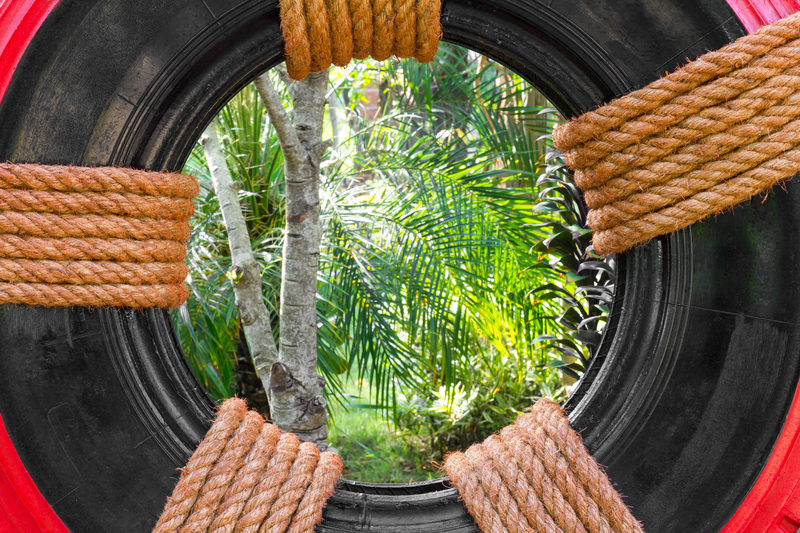Innovative Plant Pot Disposal for Modern Homes
In the age of modern sustainability, the way we dispose of everyday household items makes a significant impact on the environment. Among these items, plant pots often get overlooked during home cleanouts or gardening updates. Yet, with more households embracing indoor gardening and container planting, innovative plant pot disposal methods are quickly becoming essential for eco-conscious homeowners. In this comprehensive guide, we'll delve into creative, responsible, and modern approaches for disposing of, recycling, and repurposing plant pots, ensuring your green thumb leaves a green footprint.
Why Conventional Plant Pot Disposal Needs Innovation
Traditionally, many households would simply throw old, broken, or unwanted plant pots into the trash. Unfortunately, this contributes to an ever-growing landfill problem, especially considering the persistence of plastics in the environment. Common materials--including terracotta, ceramic, and plastics--can take hundreds of years to decompose.
- Plastic pots: Most are made from recyclable materials but are often not accepted by curbside recycling programs due to their size or residue.
- Ceramic and terracotta: These natural materials are durable but rarely recycled in standard municipal systems.
- Biodegradable options: Even these can take months or years to break down if not composted correctly.
The urgent need for modern plant pot disposal solutions lies in reducing environmental impact while keeping our living spaces clutter-free and stylish.

Exploring Contemporary Plant Pot Disposal Alternatives
Today's environmentally-minded homeowners are searching for approaches that balance efficiency, sustainability, and practicality. Let's uncover some of the most innovative plant pot disposal and recycling options suitable for the modern home.
1. Participating in Local Garden Center Pot Take-Back Programs
Several local and national garden centers now offer plant pot recycling take-back programs. These programs allow you to drop off used plastic pots--regardless of brand--for proper recycling or reuse. Here's how to participate:
- Clean pots thoroughly to remove soil or debris (this ensures acceptance into recycling streams).
- Check facility guidelines, as certain centers accept only specific sizes or materials.
- Inquire about rewards or discounts for returning pots, as some nurseries and home improvement stores incentivize eco-friendly behavior.
Engaging in such initiatives not only diverts waste from landfills but actively supports circular gardening economies in your community.
2. Creative Repurposing and Upcycling of Plant Pots
One of the most innovative plant pot disposal ideas is to avoid disposal altogether by upcycling your containers. Modern design embraces upcycling, turning what might have been trash into functional, chic decor or practical household items. Consider these creative adaptations:
- Desk Organizers: Small plastic or ceramic pots make excellent holders for pens, scissors, and other office supplies.
- DIY Storage Bins: Larger pots can be cleaned, painted, or wrapped in fabric to create bespoke storage solutions for toys, tools, or craft supplies.
- Outdoor Lighting: Paint and add solar-powered LED lights to old pots for unique patio lanterns.
- Vertical Garden Walls: Mount lightweight pots onto a wooden or wire frame to create living walls or herb displays, giving new life to mismatched or faded pots.
- Planter Art: With some paint and creativity, transform ceramic or terracotta pots into striking garden sculptures or whimsical painted faces for a playful touch.
These methods not only emphasize innovative pot repurposing but contribute to a waste-free lifestyle--an aesthetic and practical win for modern homes.
3. Embracing Biodegradable and Compostable Pot Technologies
Technology has revolutionized everything--even plant pots. Biodegradable plant pots are made from materials such as coconut fiber, peat, or bamboo pulp. These containers naturally break down when planted in the soil or added to compost bins. Here's why they're gaining popularity:
- Minimal waste: The pot composts with the plant's roots, reducing landfill contributions.
- Convenient planting: Seedlings can be directly transplanted into the garden, minimizing transplant shock.
- No chemical leaching: All-natural materials return to the earth safely.
While not technically a disposal method for traditional pots, switching to compostable options is a forward-thinking move that eliminates the need for future disposal altogether. For homes aiming to be ahead of the eco-curve, choosing innovative biodegradable pots is an investment in convenience and the environment.
Proper Sorting and Recycling of Plant Pots
With so many materials used for plant pots, effective recycling remains complex--but not impossible. Let's explore how modern homes can master sorting and recycling techniques for eco-friendly plant pot disposal.
Plastic Pot Recycling
Plastic plant pots are typically made from polypropylene (#5 PP) or high-density polyethylene (#2 HDPE), which are both recyclable in many communities. To recycle effectively:
- Clean thoroughly: Remove all soil, labels, and plant material. Residue can contaminate recycling batches.
- Check local recycling schemes: Not all plastics or sizes are accepted curbside--some may need to be dropped at a specialized recycling center.
- Batch together: Collect and bag similar types of pots to simplify sorting for recycling staff.
If curbside recycling is not an option, look for local plastic plant pot recycling events or drop-off locations at garden supply stores or community centers.
Disposing of Ceramic and Terracotta Pots
Ceramic and terracotta pots rarely get accepted in typical recycling centers due to their firing process and additives. However, there are several modern disposal alternatives:
- Break into pieces and use as drainage material at the bottom of new planters.
- Donate intact pots to local community gardens, schools, or thrift stores.
- Create unique art pieces--mosaic stepping stones, garden borders, or birdbaths--by incorporating broken shards.
- Contact local art centers, as potter's guilds may accept old clay pots for creative reuse.
Innovative ceramic pot disposal can be both environmentally conscious and artistically rewarding.
Community-Based Solutions: Sharing, Donating, and Swapping
A thriving culture of sustainability depends not just on individual action, but also community involvement. Before sending old pots to the landfill or recycling facility, consider these communal methods of modern plant pot disposal:
- Host or attend local plant pot swaps: Gardening clubs, social media groups, or local community gardens often organize events where you can trade pots in all shapes and sizes.
- List pots on online marketplaces or Freecycle: Many people starting new gardens--or eager crafters--welcome free or low-cost containers.
- Donate to schools, art centers, or nonprofit organizations: Unwanted pots can become planters for education projects, community gardens, or beautification schemes.
- Start a neighborhood pot-sharing shelf: Encourage neighbors to leave clean, usable pots for others.
Such collaborative approaches offer an innovative and community-driven solution that enriches local relationships and keeps resources in active use.
Digital Tools for Tracking and Managing Pot Disposal
Modern homes can leverage technology to streamline the responsible disposal of household items, including plant pots. Several apps and platforms now exist to connect people who want to give away or source second-hand gardening supplies. Notable tools include:
- Circular economy apps like Olio or Freegle, which enable users to give items (like plant pots) away locally for free.
- Social gardening platforms, many of which feature "swap" boards or sustainability forums.
- Smart home reminders set to prompt seasonal clean-outs and recycling drop-offs.
Utilizing these digital tools makes innovative plant pot disposal for modern homes both efficient and convenient, aligning technology with sustainability.

Tips for Reducing Future Pot Waste
The best approach to responsible disposal is to minimize waste from the beginning. Some proactive strategies include:
- Choose durable, long-lasting pots that won't crack, fade, or degrade quickly.
- Opt for modular or adjustable planters that can adapt to new plants or home design changes.
- Embrace multi-use containers that can nest or stack for easy storage between uses.
- Purchase from retailers with take-back or recycling programs already in place.
- Switch to biodegradable or compostable pots whenever possible for annuals, seeds, or seedlings.
These preventive choices embody the spirit of innovative plant pot management, helping modern households reduce the need for end-of-life disposal.
Conclusion: Paving the Way for Sustainable Green Living
In summary, innovative plant pot disposal for modern homes involves a thoughtful combination of recycling, repurposing, donation, and technological integration. By exploring new materials, participating in community networks, and embracing creative upcycling, today's homeowners can actively contribute to sustainable living. As indoor gardening and urban greening continue to flourish, it's crucial to consider not just how we grow, but how we dispose of the tools we use to nurture our plants.
Making eco-conscious choices for plant pot disposal doesn't just benefit your home--it helps shape a cleaner, greener future for communities and the planet alike. Next time you refresh your indoor or outdoor garden, let innovative thinking guide how you handle those old pots. The future of sustainable home gardening starts with what we choose to do today.
Frequently Asked Questions About Modern Plant Pot Disposal
- Can all plastic plant pots be recycled? Not always. Check the recycling codes and local authority guidelines, and ensure pots are clean before attempting recycling.
- What if my city doesn't accept plant pots for recycling? Look for nearby garden centers or community pot recycling programs, or opt for creative reuse and donation.
- Are biodegradable pots suitable for every plant? They work best for annuals, seedlings, and herbs; however, for long-term outdoor use, choose durable materials.
- How can I find a pot swap in my area? Join local gardening groups online, check community boards, or organize your own event to connect neighbors and reduce waste together.
Adopting these innovative and eco-friendly plant pot disposal strategies will help modern homes stay organized, stylish, and sustainable for generations to come.